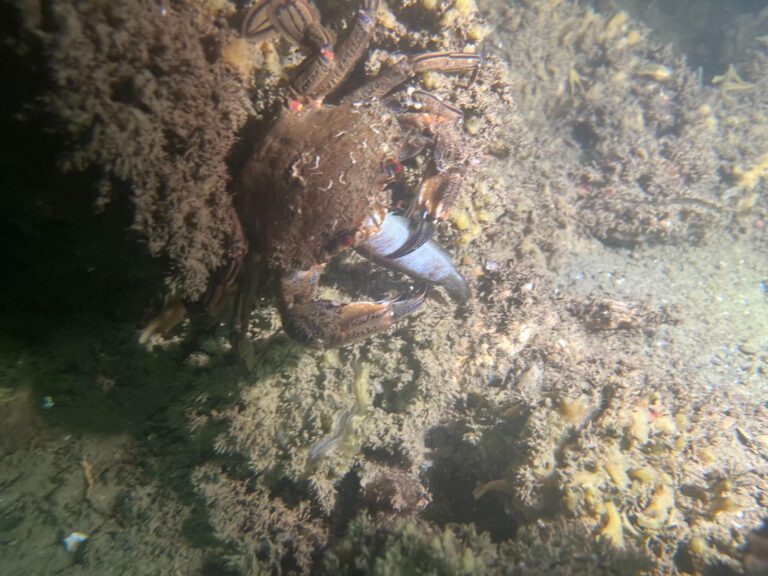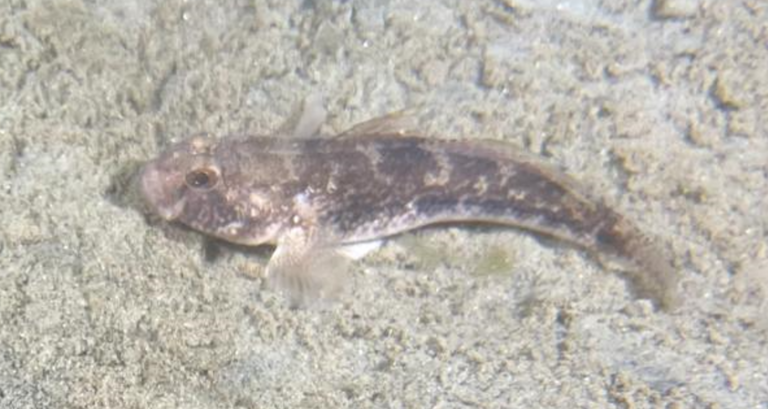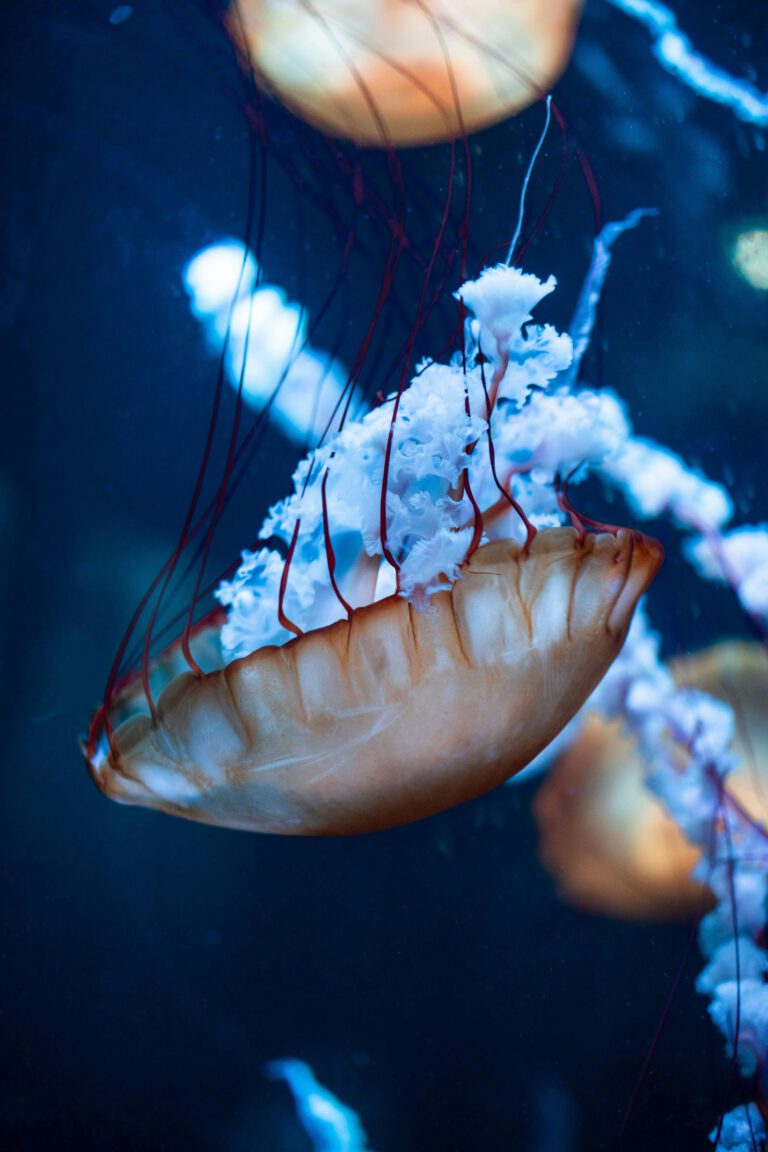Edible Crab – Cancer pagurus

Edible Crab (Cancer pagurus) - Krab
- Taxonomy: The Edible Crab is part of the Cancridae family, known for their robust, oval bodies and powerful claws.
- Species: Commonly found in European waters, especially in the North Sea and the Atlantic Ocean. It can grow up to 25 cm across.
- Reproduction: Females carry thousands of eggs under their bodies. These hatch into larvae, which drift in the water before settling on the seabed.
- Habitat: Found along rocky shores, sandbanks, and at depths up to 100 meters. Prefers areas with lots of hiding spots, like crevices.
- Diet: Carnivorous, feeding on mollusks, smaller crabs, and shellfish. Uses its strong claws to crush shells and exoskeletons.
- Conservation: Overfishing has led to strict regulations on size and catch limits in many regions to protect populations.
- Unique Anatomy: Its large, brown body and black-tipped pincers are its most recognizable features. The shell is thick, offering protection.
- Molting: Crabs molt to grow, shedding their old shell and growing a larger one.
- Lifespan: Typically around 8 to 15 years in the wild.
Edible Crab: Coastal Guardian of the Atlantic
The Edible Crab is a key player in the marine ecosystem. Found from the Mediterranean Sea to the northern waters of Scandinavia, these crabs are an essential part of the food web. Their role in keeping mollusk populations in check helps maintain a balanced ecosystem.
What is an Edible Crab?
Known scientifically as Cancer pagurus, the Edible Crab is a large, oval-shaped crustacean with a strong outer shell and powerful pincers. It inhabits rocky shorelines and sandbanks, where it feeds on a variety of prey. Its robust shell and claws make it a dominant predator, especially on shellfish like mussels and clams.
Daily Life of the Edible Crab
These crabs are nocturnal hunters, using the cover of darkness to forage for food. Their strong claws can break through tough shells, allowing them access to a rich diet of marine animals. During the day, they hide in crevices or bury themselves in sand to avoid predators.
Reproduction: The Life Cycle of a Crab
Female Edible Crabs carry eggs under their bodies until they hatch into free-swimming larvae. After a period of drifting in the ocean currents, the larvae eventually settle on the seabed, where they begin their lives as tiny crabs.
Ecological Role: Crabs and Conservation
As top predators, Edible Crabs help keep shellfish populations stable. However, due to their popularity in seafood, they are subject to overfishing. Strict regulations now exist in many areas to ensure that crab populations remain healthy for future generations.
Conclusion
The Edible Crab is an incredible species that plays an important role in marine ecosystems. With their strong claws and unique life cycle, they are fascinating creatures of the sea. Protecting them through sustainable practices is crucial to maintaining the delicate balance of our oceans.







